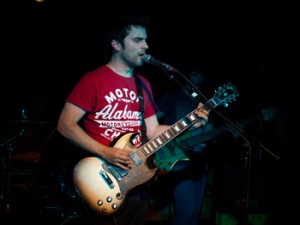Oh, is it my turn for the albums? Ok, these five stood out way above the rest and they’re a pretty mixed bunch but I think that’s what Music Riot is all about. Have a listen to these if you can because there’s a lot of really good music here.
 When you’ve listened to a lot of blues and blues/rock (and believe me I have over the years), you understand how easy it is for even very good players and writers to slip into the blues clichés, lyrically and musically. Some writers understand that not every song has to be a twelve-bar blues with lyrics about bad booze and wanton women, and Aynsley Lister is one of those writers. His songs on “Home” are recognisably blues/rock but with a recognition that the genre has to move on lyrically and musically. On “Home”, there are songs about the state of the music business today, an elegy to an old friend, a couple of brilliant covers and a tribute to Gene Hunt. What more do you want? This is one of those albums that grabs you from the first listen and doesn’t let go.
When you’ve listened to a lot of blues and blues/rock (and believe me I have over the years), you understand how easy it is for even very good players and writers to slip into the blues clichés, lyrically and musically. Some writers understand that not every song has to be a twelve-bar blues with lyrics about bad booze and wanton women, and Aynsley Lister is one of those writers. His songs on “Home” are recognisably blues/rock but with a recognition that the genre has to move on lyrically and musically. On “Home”, there are songs about the state of the music business today, an elegy to an old friend, a couple of brilliant covers and a tribute to Gene Hunt. What more do you want? This is one of those albums that grabs you from the first listen and doesn’t let go.
“Wrote a Song for Everyone” – John Fogerty
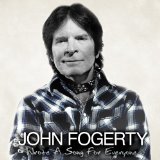 Ok, I’m going to admit to a slight bias here; I’ve been a fan of John Fogerty for much longer than I care to admit to. The first time I strapped on a guitar and played (badly) in front of an audience, the song the band played was the Creedence Clearwater Revival single, “Up Around the Bend”. I’m pleased to say that John Fogerty’s career as a performer has been much longer and more successful than mine.
Ok, I’m going to admit to a slight bias here; I’ve been a fan of John Fogerty for much longer than I care to admit to. The first time I strapped on a guitar and played (badly) in front of an audience, the song the band played was the Creedence Clearwater Revival single, “Up Around the Bend”. I’m pleased to say that John Fogerty’s career as a performer has been much longer and more successful than mine.
There are a couple of ways of looking at this album; you can see it as a cynical rehash of old material for a few quick bucks or you can see it as an opportunity to work with kindred spirits to put a twenty-first century polish on some classic twentieth century songs. You can probably guess which way I’m leaning on this one. If you only listen to one song on this album, listen to “Hot Rod Heart”; John Fogerty is joined by guitarist Brad Paisley and the final minute and a half of the song is the joyous and totally self-indulgent sound of two superb players having a great time trading guitar licks. If this doesn’t make you smile, you don’t like music. And that’s before we get on to the reworkings of the classic Creedence songs “Lodi”, “Long as I can see the Light”, “Who’ll Stop the Rain” and the less well-known “Wrote a Song for Everyone”. Oh, nearly forgot, “Proud Mary”. Superb from start to finish.
“The Dirt Tracks” – The Dirt Tracks
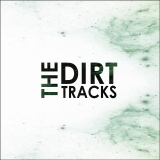 If you’re really into music, it doesn’t matter how much you’ve heard, you still love it when you hear something original and fresh (and I’ll be completely honest and say something that no-one else has written about yet). My epiphany this year was an invitation to see Spanish indie band The Dirt Tracks in central London. The audience was four people, and that included me and the band’s manager. It didn’t bother the band because they pulled out a storming set. I was given a copy of the band’s debut album and I promised to review it. When I listened to it, I was hooked.
If you’re really into music, it doesn’t matter how much you’ve heard, you still love it when you hear something original and fresh (and I’ll be completely honest and say something that no-one else has written about yet). My epiphany this year was an invitation to see Spanish indie band The Dirt Tracks in central London. The audience was four people, and that included me and the band’s manager. It didn’t bother the band because they pulled out a storming set. I was given a copy of the band’s debut album and I promised to review it. When I listened to it, I was hooked.
It’s heavily influenced by British indie, but there are elements of late ‘60s psychedelia in there as well as samples and a huge guitar attack. As if that wasn’t enough, the album includes the experimental single “Kaleidoscope” which combines two similar stand-alone songs across the stereo spectrum to create a third song. It’s quite a disorientating effect designed to demonstrate the difference between left- and right-brain processing and it’s even more impressive when you know that it’s written (like the rest of the album) in writer Santiago Coma’s second language. Very impressive debut album.
“Radio (in my) Head” – Various
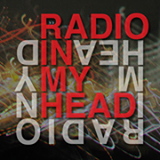 This one deserves a special mention for overcoming logistical difficulties; there are artists from 14 different countries on this collection of reworkings of Radiohead songs. There’s absolutely no filler on this album and there are a few absolute corkers. Some of the versions stay reasonably close to the Radiohead template, while The Stoneface Travellers and Yoya put their own stamp on “My Iron Lung” and “Wolf at the Door” respectively. The project was initiated by John O’Sullivan, MD of Bandhouse Records and pulled in contributions from his contemporaries at the London College of Contemporary Music (including Amy Hannam and Beth Mills, who you may have seen on X Factor)and and a few others picked up on the journey. Anyway, it’s a bostin’ album and you should all give it a listen.
This one deserves a special mention for overcoming logistical difficulties; there are artists from 14 different countries on this collection of reworkings of Radiohead songs. There’s absolutely no filler on this album and there are a few absolute corkers. Some of the versions stay reasonably close to the Radiohead template, while The Stoneface Travellers and Yoya put their own stamp on “My Iron Lung” and “Wolf at the Door” respectively. The project was initiated by John O’Sullivan, MD of Bandhouse Records and pulled in contributions from his contemporaries at the London College of Contemporary Music (including Amy Hannam and Beth Mills, who you may have seen on X Factor)and and a few others picked up on the journey. Anyway, it’s a bostin’ album and you should all give it a listen.
“Pale Green Ghosts” – John Grant
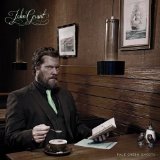 Our contributors at MusicRiot all have their own musical preferences and areas of expertise, but we’re all passionate about music and our paths tend to intersect fairly often; this is one of those cases. John Preston raved about this album several months before 6 Music latched on to John Grant and he was absolutely right; this is a great album. John Grant took a lot of flak over moving from acoustic instruments to electronic on this album (a nod to Dylan’s “Judas” moment there), but it’s still a classic singer-songwriter album. There are moments of humour, sneering, viciousness and painful emotional honesty on subjects as difficult as an HIV diagnosis. When it’s funny, it’s very funny, when it’s vicious, it’s very vicious and when it’s about honesty, it will make you cry. Even the remixes are worth a listen.
Our contributors at MusicRiot all have their own musical preferences and areas of expertise, but we’re all passionate about music and our paths tend to intersect fairly often; this is one of those cases. John Preston raved about this album several months before 6 Music latched on to John Grant and he was absolutely right; this is a great album. John Grant took a lot of flak over moving from acoustic instruments to electronic on this album (a nod to Dylan’s “Judas” moment there), but it’s still a classic singer-songwriter album. There are moments of humour, sneering, viciousness and painful emotional honesty on subjects as difficult as an HIV diagnosis. When it’s funny, it’s very funny, when it’s vicious, it’s very vicious and when it’s about honesty, it will make you cry. Even the remixes are worth a listen.
If you want to learn a bit more about these albums, you can search for the reviews on the site. Or you could give them a listen.
 So, what is it then? It’s indie Jim, but not as we know it. The Dirt Tracks is a Spanish band, writing and performing in English; you might have heard of them during their UK tour earlier this year and following the release of their third single “Kaleidoscope”. You might have seen some very lazy comparisons with a certain band from Oxford, but I’m not having any of that; there are many influences on show here and the “R” band is only one of those. What the band does very successfully is to pull together influences from a wide range of sources and eras and blend them with their own ideas to create sounds which are very definitely The Dirt Tracks.
So, what is it then? It’s indie Jim, but not as we know it. The Dirt Tracks is a Spanish band, writing and performing in English; you might have heard of them during their UK tour earlier this year and following the release of their third single “Kaleidoscope”. You might have seen some very lazy comparisons with a certain band from Oxford, but I’m not having any of that; there are many influences on show here and the “R” band is only one of those. What the band does very successfully is to pull together influences from a wide range of sources and eras and blend them with their own ideas to create sounds which are very definitely The Dirt Tracks.
The Dirt Tracks line-up is almost a traditional rock/indie five-piece with the traditional keyboard being replaced by a couple of samplers providing beats and, well, samples. The combination of two guitars, melodic basslines and samplers allows the band to create a huge variety of textures and dynamics throughout the album. The construction of the songs and the quality of the playing are superb throughout the album and the band’s use of vocal harmonies is original and highly effective.
The opening track, “All Paths Cross”, is a perfect example of this, fading in with a string and keyboard sample before the lead vocal and then percussion build up layers of sound for nearly two minutes before breaking into the body of the song. And you get a reference to Pink Floyd’s “Breathe (In the Air)” which has to be intentional. This is followed by the brilliant but disorientating “Kaleidoscope”, which we reviewed as a single earlier this year. “Bit Train” is driven along by a dirty and distorted two-guitar riff which is closer to the Black Crowes than British indie and “Bloop” features two guitars and bass interweaving melody lines under a powerful vocal before morphing into a heavy metal break and several changes of tempo; it sounds great here, but it’s even better live. “Midline” is an interesting blend of indie and funk with and a lyric about escaping from the mundane world. Santiago Coma’s high tenor on this track vocal works perfectly with the guitar arrangements to create a relentless, driving feel which mirrors the theme of a life being forced down a certain predetermined track and the escape from that track.
“Astroblender” and “Pulse” are perfect examples of the way the band use their influences; the former breaks down into a guitar solo and choral section which wouldn’t sound out of place on the first Queen album, while the latter is pure Depeche Mode. “Up” is an atmospheric instrumental interlude leading into the sparse arrangement of “Unchanged”, which brings me to the only song that I don’t like on the album. “Self-Terrorism Manual” has a lo-fi production and, for me, the vocal just doesn’t work on the first two verses. Things improve after that, but I think the album would have been better without this song. The final song, “Another Way (to the Other Side)” takes the album out on a high with big guitars, vocals and harmonies.
There’s no doubt that The Dirt Tracks are something special; the band mixes up British indie with psychedelia, hard rock, samples and beats with great songs, innovative arrangements and a huge amount of energy. This is a very good debut album and it’s in my top five so far this year.
Physical release Monday September 30.
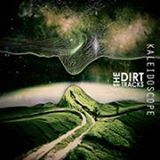 Here’s a really interesting idea. The Dirt Tracks new single is three songs in one, but not in the style of say, “Bohemian Rhapsody”, where each distinct section segues into the next; it’s a bit more complicated than that and it’s a very clever idea. To get the full impact of “Kaleidoscope”, you need to be able to isolate the right and left stereo channels because the two songs are panned to opposite ends of the stereo spectrum; if you listen to only the left channel, you hear one song and if you listen to only the right channel you hear another song. Still with me?
Here’s a really interesting idea. The Dirt Tracks new single is three songs in one, but not in the style of say, “Bohemian Rhapsody”, where each distinct section segues into the next; it’s a bit more complicated than that and it’s a very clever idea. To get the full impact of “Kaleidoscope”, you need to be able to isolate the right and left stereo channels because the two songs are panned to opposite ends of the stereo spectrum; if you listen to only the left channel, you hear one song and if you listen to only the right channel you hear another song. Still with me?
To make this idea work, the songs need to have the same tempo, structure and chord sequences, but after that you can get a bit creative and The Dirt Tracks have got very creative indeed. Each track has its own drum pattern, chiming guitar arpeggios and sampled sounds and stands alone as a complete song. The concept is that one of the songs represents rationality while the other represents emotion and the combination of the two songs demonstrates the conflict in the human mind between the two contrasting approaches to the way we interpret information.
So, does it work? When we listen to music in stereo, what we usually hear is a soundscape where various instruments, sounds and voices appear to be positioned at various points from left to right between the speakers or headphones; we expect the lead vocal to be in the centre and anything goes after that. If we hear a sound at exactly equal volumes in the right ear and the left ear, the brain tells us that the sound is directly in front of us. If a sound is louder in the left or right ear, the brain positions it spatially to the left or the right. Have a listen to Thin Lizzy’s “Don’t Believe a Word” to hear how that works; the vocal is in the centre and the two guitars are far left and far right.
“Kaleidoscope” plays with that concept by pushing everything to the extreme right or left of the stereo spectrum. The two songs are very cleverly dovetailed together with instrumental and vocal parts combining in the stereo mix to create a completely new (but similar) song and the harmonies created are particularly effective. I’m only guessing here, but I suspect that everyone will hear this in a slightly different, personal way which is dependent on the way they process music mentally. I listened to the two individual tracks first before combining them into the complete song.
After hearing the individual parts, combining them has a very disorientating effect because we hear sounds in an unusual and unexpected way as the brain struggles to adapt to a new way of listening; the instrumental and vocal parts seem to combine in the centre at times while separating across the stereo channels at others, creating the illusion of moving in and out of phase at times. And that fits in well with the idea of humans having different cognitive styles and processing sensory inputs in different ways.
This is a very interesting piece of experimental music which explores the way the human brain processes music but it’s a lot more than that. It’s a song which, in the combined
form, is slightly disturbing, but totally captivating and you really should give it a listen. And while you’re doing that, check out the first two singles “The Madding Crowd” and “Never Been to Mars” because they’re very good as well.
Available on Monday 5th August on iTunes and Spotify.
So, a Spanish indie band playing at a small but well-established venue five minutes from Kings Cross station; sounds good to me. The venue was Monto Water Rats and the band was The Dirt Tracks, making their second appearance there in four days to promote their current single, “Kaleidoscope” and their upcoming debut album. The line-up is Santiago Coma (guitar and vocals), Rafael Vicente (guitar and backing vocals), Carlos Ortigosa (samplers and backing vocals), Miguel Alvarez (bass and backing vocals) and Guillem Masid (drums and percussion) and if I had to define their musical style, I would probably call it psychedelic indie.
The band opened their set with the first song from the debut album, “All Paths Cross”, which gradually builds through an extended intro of sampled synth washes to a main section which hints at some Pink Floyd influences before segueing straight in to the second song “Pulse” with its sampled beats and big, dirty guitars. “Bit-Train” took the pace down a few notches with a slow-riffing guitar intro leading into a main section dominated by the two guitars. The middle section of the set featured two singles “The Madding Crowd” and “Kaleidoscope”, which are both melodic and showcase the band’s vocal harmonies and, in particular, the backing vocals of Carlos Ortigosa.
The set started to build to a climax with the heavy metal guitar riff of “Lady Low”, the jangly, catchy pop of “Never Been to Mars” and the final song “Bloop” with its emphasis on the guitars and vocal harmonies again and a closing section with entire band playing percussion to bring the set to a close; and that was it. In just under forty-five minutes, The Dirt Tracks played a set which gave us well-written songs, great playing and arrangements (particularly the harmonies) and a huge dynamic range from the quiet and subtle opening of the set to the heavy guitar riffs of “Lady Low” and “Never Been to Mars”.
Despite a disappointingly small audience (possibly because of the good weather) the Dirt Tracks played their short opening set of eight songs as if their lives depended on it. Santiago Coma is a hugely charismatic frontman with a superb voice who is also crucial in the band’s guitar strike force with Rafael Vicente; sometimes it’s obviously rhythm and lead guitar, but more often it’s intertwining guitar parts which meld into something truly creative when they combine with the sampled sounds. The band can do the quiet and introspective material and then blast straight in to megariff mayhem with complete confidence; they are a very accomplished and exciting live act and there are plenty of good melodic songs to get them some radio play. This is a band which has all the pieces in place and only needs the breakthrough now; a bit of airplay or festival set with a big audience is all the momentum they need to send them on their way.
Keep an eye on MusicRiot for future UK tour dates and an exclusive review of the debut album in the next few weeks.


